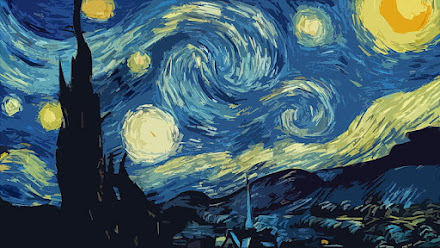Baroque Blog: The Arnolfini Portrait
Baroque Blog: The Arnolfini Portrait
Jan van Eyck, 1434
National Gallery, London
Introduction
In this blog, I'd like to talk about The Arnolfini Portrait, painted in 1434 by Jan van Eyck. Even though this painting is a key piece of Northern Renaissance art, it has a lot of elements that connect to the Baroque period. It’s in the National Gallery in London, and it really makes the audience think about human experiences and the personal stories of the people in it, just like many Baroque artworks do.
Art Appreciation
If I could see this painting for the first time again, I’d feel a strong sense of connection. The way Van Eyck uses lines and curves is amazing; the figures look so real. The detail in the colors makes everything feel alive.
When I look at the couple’s faces, I can’t help but wonder who they are and what their lives are like. Their expressions make me ask questions: Who are they? What are their stories? This kind of curiosity is similar to how Baroque artists tried to pull you into their works emotionally. This painting grabs my attention not just because it’s beautiful, but also because it carries a deeper feeling that strangely calms me. I would love to have a copy of this painting, not just for how it looks, but for the emotions it brings out.
Connection to Influences
The Arnolfini Portrait shows a strong humanist theme from the Renaissance that focuses on individual experiences and identities. The couple’s fancy clothes and the rich background shows their wealth but it’s not just about money. The way they hold hands shows how important their relationship is, showing a deep emotional connection. This mix of wealth and bonds is the highlight at the Baroque interest in dramatic contrasts and complex human relationships.
Moreover, this painting connects to the influence of the Council of Trent which wanted art to be clear and emotionally engaging. The way Van Eyck composed this painting and the rich symbols in it invite to whoever views this work to connect with the couple’s story so much like how Baroque art tells a story. The Council wanted to make religious themes relatable, and Van Eyck’s work aligns perfectly with that idea (Baxandall, 1988; Smith, 2015).
Conclusion
Jan van Eyck’s The Arnolfini Portrait captures the emotional side of the Northern Renaissance while setting the stage for themes that carry into Baroque art. Through its lines, colors, and details, this painting tells a powerful story about human experiences and highlights humanist ideas. I hope people see this painting as more than just something pretty. I hope people find this pretty because of the deep messages about humanity that make it truly special.
Works Cited
• Baxandall, Michael. Painting and Experience in Fifteenth-Century Italy. Oxford University Press, 1988.
• Smith, Jeffrey. Artistic Intention and the Council of Trent: How Art Became a Vehicle for Emotion in the Baroque Era. Journal of Art History, 2015.
• National Gallery. “The Arnolfini Portrait.” National Gallery, https://www.nationalgallery.org.uk/paintings/jan-van-eyck-the-arnolfini-portrait.



Hi Lily, I feel the same way about seeing it again for the first time. I remember the first time I saw this piece was in Honors History in high school. There is a strong sense of connection between the subjects in the piece. To me, this piece has always felt like it was somewhere between a Renaissance piece and a Baroque piece, which you also commented on. It shows several different qualities that could be attributed to both the Renaissance and Baroque eras. All in all, a very nice piece. Thanks for sharing!
ReplyDelete